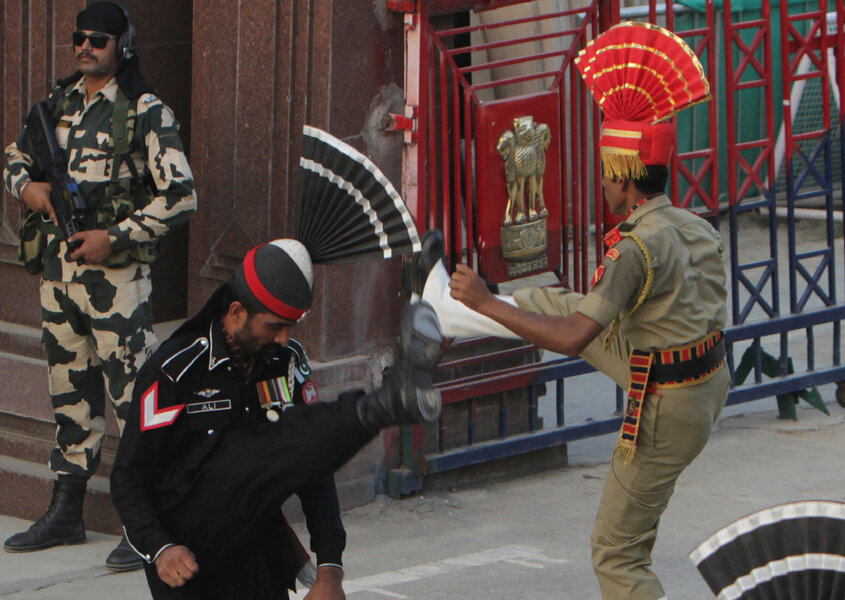The cool breezes on Asia’s hot spots
Loading...
India and Pakistan, which have fought four wars, seem on the verge of another one. A series of violent incidents in the disputed Kashmir region has triggered old nationalist instincts that, in the past, led to broader conflict. Yet so far leaders on both sides are showing rare restraint. If they can resolve the current hostilities, what might that tell us about new global pressures on nations to keep the peace?
The current Indian-Pakistan flare-up is only one of three flashpoints in Asia that need the world’s attention but can also be a learning point. North Korea’s escalation of its nuclear and missile threats has forced South Korea and Japan to raise their military responses. And China’s forceful claims to islands far from its shores have created the potential for dangerous encounters with the United States Navy or with US allies in Asia. Together all three situations represent a possible reversal of Asia’s recent years of peace after the disastrous wars of the 20th century.
What clearly pushes these Asian nations to think twice about risking violence is an increase in nuclear weapons in the region, especially in Pakistan, North Korea, and China. The cold-war strategy of avoiding “mutual assured destruction” through retaliatory nuclear strikes may account for some of the restraint.
Yet less visible factors may be at play. Most Asian economies now rely more heavily than ever upon trade. They cannot afford to scare off investors. They have joined regional groupings and signed up for peacemaking ventures. With access to digital devices, their peoples are more aware of each other’s cultures and peaceful aspirations. Even in isolated North Korea, people are more connected to the world and demanding of economic progress.
These trends, in other words, are spreading norms and values that help escalate respect between nations rather than war. They are contributing to a steady if fitful decline in human violence that has continued for centuries. And they make it easier to punish nations that violate the norms of peace. Russia discovered this in 2014 after taking Crimea from Ukraine. It still suffers from diplomatic and economic sanctions by the West.
The India-Pakistan tensions are perhaps the most volatile in Asia for reasons of religion, history, difficult claims to territory, and India’s natural dominance. Yet they could be a bellwether for Asia’s rising aspirations for peace and its improved tools to cool hot spots. With a population that is nearly half of humanity, Asia needs to show that peace can be the norm.







